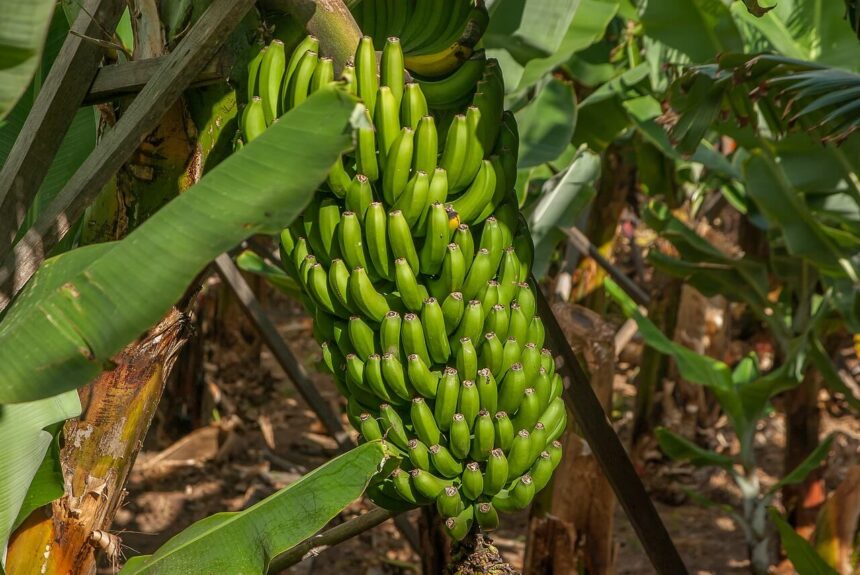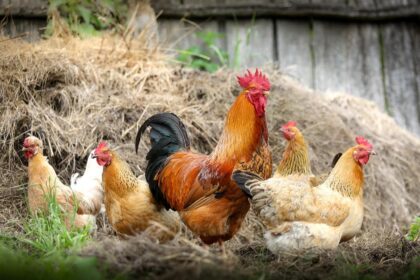This post is about taking care of the Banana Plantations In Kenya.
We will cut to the cheese and go straight to the main points that caught our attention about Banana plantations in Kenya. Let’s get started.
How to take care of Banana Plantations In Kenya
Irrigation
Just like any other crop, banana trees love plenty of water. This is attributed to the giant leaves in the banana tree having a large surface area, which causes the plant to lose large volumes of water through transpiration.
In addition to the above, banana trees need plenty of moisture in the soil during their growing season to speed up their fruiting, bloating stems and fleshy roots.
Remember, dry soils cause roots to get damaged due to rapture. This, in turn, will stop their growth.
Therefore, in this regard, water should be provided to the plant by irrigation at close intervals throughout the growing season.
It is good to note that the water needed for banana irrigation depends on the;
- The type and nature of the soil.
- The climatic conditions prevail in the region.
- Age of the plant.
- The type of irrigation method used in the plantation.
To maximize productivity, the salinity of water used for irrigation should not exceed 500 parts per million cubes.
Generally speaking, banana tree plantations can be watered using the following irrigation systems:
Drip Irrigation
Drip irrigation is the most preferred method of irrigating banana plantations in Kenya. This flooding allows the banana tree plants to achieve their minimum water requirement.
This method is also used to add fertilizer to the plant in a process known as Fertigation.
Drip irrigation also reduces the growth of weeds and increases crop yield if used and managed correctly.
The drip irrigation method may also use seedlings resulting from tissue transplantation.
How Drip Irrigation Works
Generally, the drip irrigation system uses two irrigation tubes on each banana tree row.
These tubes have dedicated points known as drip emitters, distributed across the lines at 50cm apart.
The drainage rate per emitter should be approximately 4litres/hour and ranges from the hours of daily operation between 6-12 hours per day.
This saves the plantations between 27 liters/day and 54 liters/day depending on other conditions affecting the plant’s growth, such as the climate, plant size, and leaf surface.
The number of operating hours is calculated to allow ground moisture, about 75% of the field capacity.
Therefore, following this system under technical supervision by those responsible for its follow-up is preferable.
Things to consider when watering Banana plantations in Kenya by drip irrigation:
- Avoid watering at noon during the hot seasons. Irrigation should best be done in the morning and evening.
- Regularly check the drip pipes, emitters, and taps to ensure their safety and repair damaged ones.
- Check the water pressure at the irrigation pump and the beginning and end of the lines.
- Ensure that the filters are clean so that they do not clog the points, and thus the water does not reach the plants.
Banana Plantations In Kenya: Fertilizer Application
Bananas plantations are one of the neediest fruit plants for fertilizing, so an analysis of the soil must be carried out before the farm’s fertilizer policy is drawn.
If the dry matter of a litmus paper contains 2.6 -2.9% nitrogen (N 0,5-0,29%, (N2 phosphorous, (P2O2) 3.4% potassium (K2O)), in general, the following program can be guided to fertilize acres of bananas:
1. Organic Fertilizer
Organic fertilizer is added at a rate of 40-60m3 per acre during the cold seasons, and in the first year, it is added during the preparation of worms before planting.
2. Ground Mineral Fertilizer
Mineral Nitrogen Fertilizers
It is added at 550g of nitrogen per plant per year. It is preferable to provide it from ammonia sulfate and distribute it in bimonthly batches extending until October and starting in the first year after planting.
Phosphorous Fertilizers
It is added at 45 phosphorous oxide (P2O2) units. It usually provides calcium superphosphate, equivalent to 250g per plant added during the cold season, and can be agitated with the municipal fertilizer added simultaneously.
Potassium Fertilizers
It is added at the rate of 250g per plant per year, divided into two batches, the first during April and the second during July. Potassium is provided from the potassium sulfate fertilizer (K2SO4).
3. Foliar fertilizer
Foliar fertilizer from the micronutrients of ready-made compounds is given at three sprinkles in July.
Weeding of Banana Plantations In Kenya
Banana plantations are irrigated and fertilized at higher rates than other fruits. Therefore, weeds spread abundantly on this type of farm.
Therefore, it is advised to cultivate the soil close to the surface whenever possible so that the depth of the hoeing does not exceed 5cm deep to protect the surface roots.
Caution is necessary to perform the hoeing when flowering and holding the fruits. The number of hoeing times may reach about 15 homes per year, which is costly.
Therefore, annual and perennial weed killers are currently used as sprays during the late rainy seasons and early summer ( December to March)













